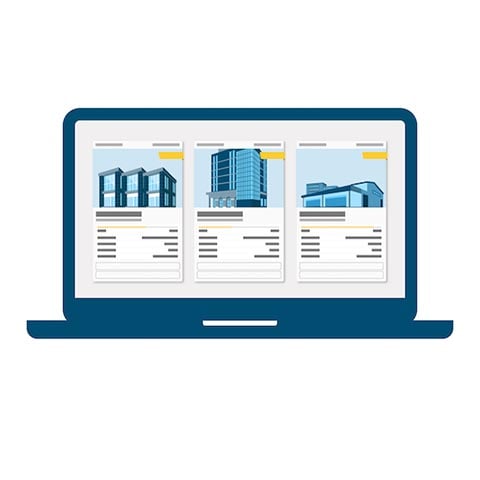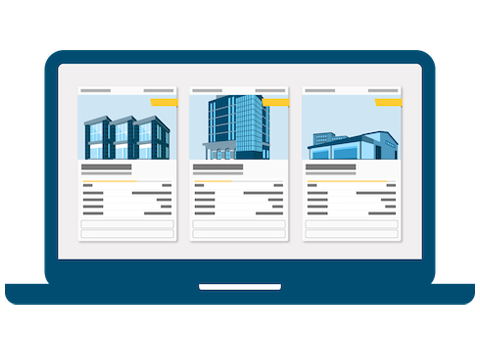
It takes careful planning and strategic execution to successfully complete a 1031 exchange. The keyword here is planning — you must decide prior to divesting your investment property to do a 1031 exchange. If you sell your property in a straight sale, you’ll be left out of the 1031 exchange process.
Let’s take a closer look at how the 1031 exchange process works, and if you can do a 1031 exchange after closing.
When to Initiate the 1031 Exchange Process
If you have an investment property you are ready to divest, it’s crucial that you begin the exchange process well before close of sale.
One of the key rules about 1031 exchanges is that sellers cannot take possession of sale proceeds during the exchange process – doing so will likely result in a disqualified exchange and leave you on the hook for any realized capital gains and depreciation recapture tax liabilities.
In order to undertake a 1031 exchange, you must establish an exchange agreement with a qualified intermediary (QI) prior to divesting your relinquished (original) property. The qualified intermediary holds sales proceeds in a qualified escrow account, as well as facilitates the purchase of your replacement property. This process ensures that you never take receipt of funds during the exchange and you remain compliant with Internal Revenue Service exchange regulations.
To reiterate, the exchange agreement with a Qualified Intermediary needs to be established before you close on your relinquished asset. That’s one reason why proper planning and execution are so important to the exchange process. If you don’t set up the exchange process before selling your investment property, you won’t be able to qualify for the tax advantages that come with a 1031 exchange.
Once you’ve set the wheels in motion, and you’ve identified at least one property before closing on the relinquished property, there are several different events that occur after closing, along with a few important steps to keep an eye on.
Deferment Of Capital Gains And Depreciation Recapture
Two tax benefits of a 1031 exchange are the deferment of capital gains and depreciation recapture. Capital gains from the sale of the relinquished property can be deferred. Rather than paying taxes on those gains, they are deferred until the replacement property is relinquished. However, there are still methods that can be used at that time, such as another 1031 exchange.
Depreciation expense taken while the asset was held must be recaptured once it is sold — a process called depreciation recapture. Depreciation recapture can create a significant tax bill and, in some cases, it can be higher than the capital gains tax bill. Recaptured depreciation is also taxed at the higher rate of 25%, compared to the maximum of 20% for long-term capital gains.
As an example, let’s say you owe taxes on a $500,000 capital gain, of which $250,000 is attributable to depreciation expense while holding an asset (as you may know, depreciation lowers your adjusted tax basis). You’ll pay 25% in taxes on the $250,000 through depreciation recapture once the asset is sold. This means $62,500 will be owed in depreciation recapture taxes, while $50,000 will be due on the rest of the gain. With a 1031 exchange, you are able to defer both of these tax liabilities.
With depreciation recapture, you were able to reduce taxable income through an annual depreciation expense. Once the property is sold, however, the IRS comes in and recoups some of that depreciation, taking back some of the taxes that you didn’t pay due to depreciation.
Following The Guidelines Are The Key To Success
There are a few essential rules and timelines that must be followed to help ensure a smooth 1031 exchange process. One is that the entity selling the relinquished property must be the same entity that is acquiring the replacement property. In other words, if an LLC is selling the relinquished property, the same LLC must acquire the new property. This extends to individual property owners as well, not just partnerships and corporations.
The replacement property must also be a “like-kind” property. Generally speaking, any type of investment property could be considered “like-kind”. Further, the “like-kind” property must be of equal or greater value to defer all of the taxes on the capital gain.
There are two timeframes to be aware of — 45 and 180 days. Once the property has been relinquished, you have 45 days to identify the replacement property. You can identify up to three replacement properties, follow the 200% rule, or the 95% rule. Also, you have 180 days to close on the replacement property. That’s 180 days starting from the date the property has been relinquished.
It’s also important to avoid receiving actual or constructive receipt of funds at closing. An actual receipt means the taxpayer has the check from closing in-hand. A constructive receipt means money is credited to the taxpayer’s account, set apart for the taxpayer’s use, or otherwise made available to the taxpayer. The next section discusses what should happen to funds from closing on the relinquished property. Both actual or constructive receipts are treated as a taxable sale by the IRS, which means a 1031 exchange will not be possible.
Executing A 1031 Exchange After Closing
Starting off with a 1031 exchange qualified intermediary (QI) can avoid problems with actual or constructive receipts. The QI will establish a qualified escrow account for funds from the relinquished property’s closing. These are the same funds that will eventually be used to acquire the replacement property. Using the escrow account means the funds are never in your possession.
Whoever you choose for a QI, keep in mind that they cannot be a disqualified person, which includes family members, employees, financial connections, or agents of the taxpayer. Also, check that your QI has a QI-EIN (Employer Identification Number).
There are certain restrictions placed on funds in the escrow account, such as limiting taxpayer access to the funds. IRS Section 1.1031(k)-1(g)(6), also called “Lender Issues and the (g)(6) Provisions”, states that the taxpayer can’t receive, pledge, or borrow against funds. These restrictions help to avoid potential issues that can derail the 1031 exchange.
Working with a QI can help you avoid the above potential issues. A reputable QI can help ensure your 1031 exchange goes smoothly and adheres to IRS guidelines.
This material is for general information and educational purposes only. Information is based on data gathered from what we believe are reliable sources. It is not guaranteed as to accuracy, does not purport to be complete and is not intended to be used as a primary basis for investment decisions. It should also not be construed as advice meeting the particular investment needs of any investor.
Realized does not provide tax or legal advice. This material is not a substitute for seeking the advice of a qualified professional for your individual situation.
Hypothetical examples shown are for illustrative purposes only.
Costs associated with a 1031 transaction may impact investor's returns and may outweigh the tax benefits. An unfavorable tax ruling may cancel deferral of capital gains and result in immediate tax liabilities.



